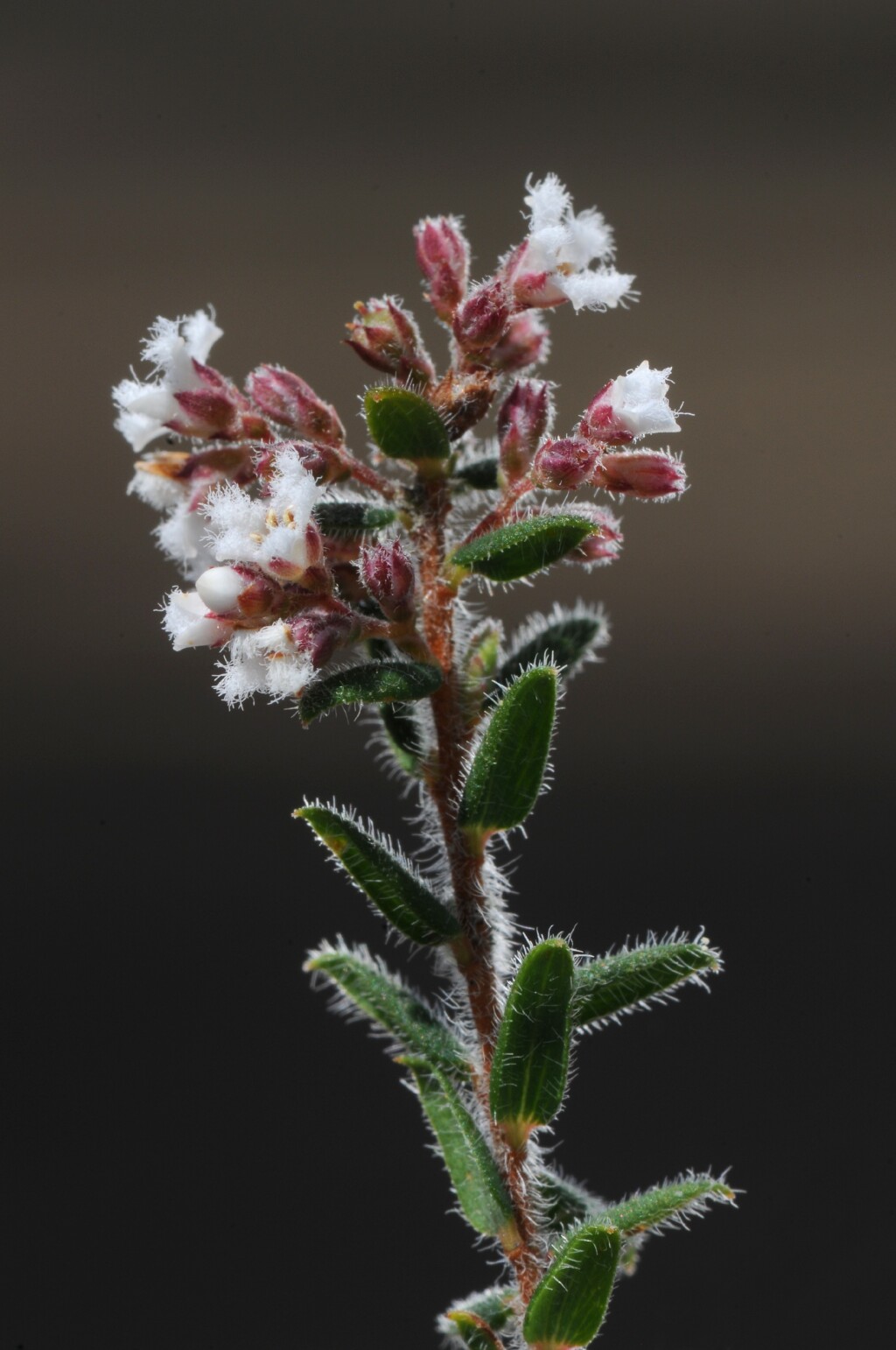Leucopogon thymifolius
Lindl. ex Benth. Thyme Beard-heathSlender shrub to c. 1.2 m. high; branchlets hispid to pilose. Leaves widely spreading to reflexed, ovate to oblong, 2.5–11 mm long, 0.5–2 mm wide, convex, concolorous or slightly discolorous, both surfaces and margins long-hispid to pilose, venation indistinct; apex acute, slightly thickened, recurved. Flowers white to pale pink, crowded to rather sparse, (3–)7–13 in spikes 7–25 mm long in upper axils, or spikes clustered on leafless branch-tips; bracteoles ovate, 0.8–1.5 mm long, acute, sparsely to moderately hispid; sepals narrowly ovate, 1.3–2.2 mm long, acute to acuminate, hispid; corolla 1.6–2.5 mm long, lobes slightly longer than tube, acute, erect or spreading, densely bearded within; anthers with short, recurved sterile tips; ovary 3–5-locular, glabrous, style 0.3–0.5 mm long. Fruit ellipsoid to obovoid, c. 2–3 mm long. Flowers Sep.–Nov.
Wim, GGr, DunT. Confined to the Grampians and nearby Pomonal where occurring in open-forest and heathy woodland usually in elevated sites (e.g. Mt William, Serra, Victoria and Mt Difficult Ranges).
A variant with leaves shorter than typical (2–4 mm long), and shorter, more crowded flower spikes occurs on Mt William and nearby on the Major Mitchell Plateau, and at Mt Abrupt. It vegetatively resembles L. microphyllus var. pilibundus, but has floral characters of typical L. thymifolius.
Powell, J.M.; Walsh, N.G.; Brown, E.A. (1996). Leucopogon. In: Walsh, N.G.; Entwisle, T.J., Flora of Victoria Vol. 3, Dicotyledons Winteraceae to Myrtaceae, pp. 494–509. Inkata Press, Melbourne.
 Spinning
Spinning